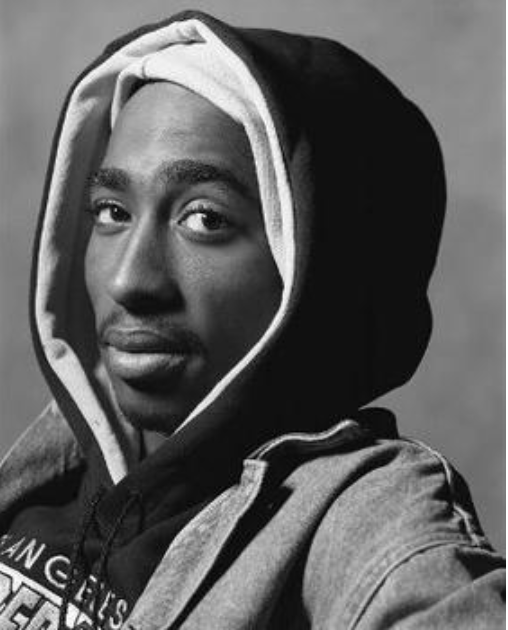This week’s Songs You Should Hear is a little different. Given the vast influence the Black community has had on music history, the Catalyst thought it only appropriate to dedicate the last SYSH column in February to Black History Month.
“Describing the African-American influence on American music in all of its glory and variety is an intimidating—if not impossible—task,” Dr. Steven Lewis wrote in his 2016 Smithsonian article “Musical Crossroads: African-American Influence on American Music.” “African-American influences are so fundamental to American music that there would be no American music without them.”
This fundamentally established African-American music as a cornerstone of American music as a whole. In part, this was because music was a way for displaced peoples to create new bonds and ties, ties that they held onto in the face of adversity. This sense of community and reverie—a celebration of differences that was created through sharing music—was what drew people to traditionally African-American music.
“Their work songs, dance tunes, and religious music—and the syncopated, swung, remixed, rocked, and rapped music of their descendants—would become the lingua franca of American music, eventually influencing Americans of all racial and ethnic backgrounds,” Lewis said.
Lewis went on to describe how most African-American musical motifs can in some way be tied back to the continent of Africa. Notably, the banjo was likely based on West African lutes and eventually combined with Western standards for tuning to create the staple folk country sound. Ragtime and jazz music similarly took elements of African music and combined them with standards from Western music theory to create a particularly American genre. These elements can still be heard in American pop music today.
Without further ado, these are this week’s SYSH picks.

“The Entertainer” by Scott Joplin
Scott Joplin was born in Texas in 1868 and was considered to be the King of Ragtime. He wrote over 100 ragtime pieces (“rags”). Ragtime music originated in predominantly African-American communities in St. Louis near the end of the 19th century. Joplin’s 1902 piano rag “The Entertainer” is his most well-known rag, which reentered prominence in a ragtime revival in the early 1970s, when it was featured on the soundtrack of the film The Sting.

“I’ll Be Seeing You” by Billie Holiday
Billie Holiday was born in Philadelphia in 1915. Holiday sang in nightclubs as a teenager and at 18 she became a recording artist when she met producer John Hammond. Holiday’s hauntingly beautiful vocals perfectly match the melancholic tone of her 1944 song “I’ll Be Seeing You” as she sings to a former lover, reminiscing about the better times they had together.

“So What” by Miles Davis 1959
Miles Davis was born in Alton, Illinois in 1926. He first picked up the trumpet in 1935 after a friend of his father gave it to him as a gift. This jazz piece opens with just a piano and an upright bass and eventually passes the focus to Davis and his quintet.

“All Along the Watchtower” by Jimi Hendrix
Jimi Hendrix was born in Seattle, Washington in 1942 and is described by the Rock and Roll Music Hall of Fame as “arguably the greatest instrumentalist in the history of rock music,” and was definitely one of the most revolutionary guitarists of his time. Hendrix’s first instrument was a ukulele he found in his garage in 1957, which he learned to play by ear by listening to the radio and playing along. “All Along the Watchtower” was originally written and recorded by Bob Dylan and, according to musician Andy Gill, “In Dylan’s version of the song, it’s the barrenness of the scenario which grips, the high haunting harmonica and simple forward motion of the riff carrying understated implications of cataclysm; as subsequently recorded by Jimi Hendrix, that cataclysm is rendered scarily palpable through the dervish whirls of guitar.”

“How Will I Know” by Whitney Houston
Whitney Houston was born in Newark, New Jersey in 1963 and is the cousin of singer Dionne Warwick. Houston started singing and playing the piano in her church choir growing up and began soloing at age 11. She was discovered by an Arista Records representative in 1983 while singing in a New York City nightclub. Following that encounter, Houston was shortly granted a record deal. She rose to fame in the mid and late 1980s, receiving praise from Rolling Stone magazine, deeming her “one of the most exciting new voices in years.”

“Dear Mama” by 2Pac
Tupac Amaru Shakur was born in New York City in 1971. In 1991, under the stylization “2Pac,” Shakur debuted on the rap group Digital Underground’s single “Same Song.” “Dear Mama” was released on Feb. 1, 1995 as a tribute to Shakur’s mother in which he commends his mother’s courage and shows his appreciation for all that she endured as a member of Black Panther Party.

“Crazy in Love” by Beyoncé feat. Jay-Z
Beyoncé Knowles was born in Houston, Texas in 1981. Knowles got her start in the female R&B group Destiny’s Child in the early 1990s. In the mid 2000s, Knowles began her solo career, which permanently cemented her in the spotlight. The 2003 hit single “Crazy in Love” from her debut solo album Dangerously in Love combined elements of hip hop, soul and funk and has become a staple in Beyoncé’s live performances.

“I” by Kendrick Lamar
Kendrick Lamar was born in Compton, California in 1987. A pivotal moment for Lamar was when he witnessed 2Pac and Dr. Dre filming the music video for “California Love” in 1995. Lamar released a mixtape in 2004 at the age of 16 which got him the attention of and shortly after a record deal from Top Dog Entertainment. “I” was released in 2014 as the lead single for his album To Pimp a Butterfly and it granted Lamar two Grammy Awards in 2015 for Best Rap Performance and Best Rap Song. Lamar reminds us to take it slow with the lyric “one day at a time, sun gonna shine,” and we can’t help but smile and sing along as he chants, “I love myself.”
As always, these songs and more can be found on a Spotify playlist here.
Information in this article was gathered from thehoya.com, wikipedia.org and music.si.edu.
